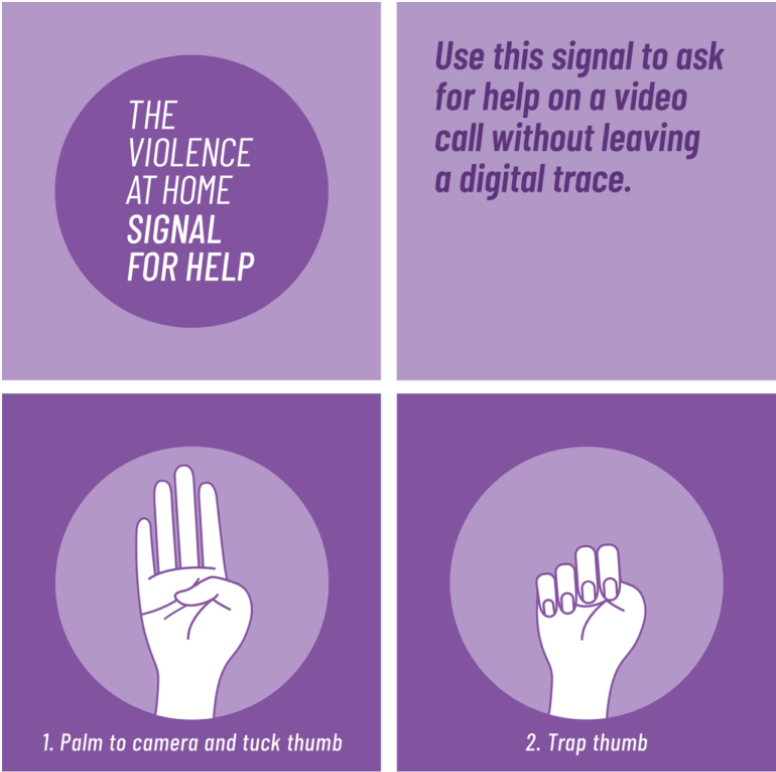Shopping cart
Resources
Crime & Safety
Stay informed and empowered
![]()

NamUs
The National Missing and Unidentified Persons System (NamUs) is a free resource from the U.S. Department of Justice. It is the only national repository that can be searched by medical examiners, law enforcement, and the general public in hopes of resolving these cases.

National Center for Missing & Exploited Children
NCMEC works with families, victims, private industry, law enforcement, and the public to assist with preventing child abductions, recovering missing children, and providing services to deter and combat child sexual exploitation.

Black & Missing
The Black and Missing Foundation, Inc. (BAMFI) is a non-profit 501(c)(3) organization whose mission is to bring awareness to missing persons of color. They provide vital resources and tools to a missing person’s families and friends and educate the minority community on personal safety.

Sovereign Bodies Institute
This database logs cases of missing and murdered indigenous persons to form a thorough central database that spans beyond colonial borders. It is a comprehensive resource to support community members, advocates, activists, and researchers in their work towards justice for indigenous stolen sisters.

Fowler-O’Sullivan Foundation
With safety and compassion as our core principles, the Fowler-O’Sullivan Foundation provides assistance to families of missing hikers, connects them to vetted resources, facilitates searches on their behalf once official efforts have been suspended, and supports initiatives to prevent future missing hiker cases.

Texas EquuSearch
Texas Equusearch is a 501(c)(3) tax-exempt organization established in 2000 to aid families and law enforcement agencies in the search for missing loved ones. Equusearch has grown from a small horse-mounted team to include hundreds of volunteers with four-wheelers, boats and aircraft.

Victim Support
Human relationships can be ruptured indefinitely by ambiguous loss, causing trauma and frozen grief. Therapy is available to support those grappling with the pain and confusion of loss without answers. When a loved one disappears, the remaining family members, especially parents and young children, must find a way to move forward in the face of no resolution.

Citizens Against Homicide
Citizens Against Homicide (CAH) helps families of murder victims by assisting them through the complicated criminal justice system, providing trial and courtroom support, accompanying victims to parole hearings, and providing information on pending crime legislation.

POMC
The National Organization of Parents Of Murdered Children (POMC) provides support and assistance to all survivors of homicide victims while working to create a world free of murder. POMC makes a difference through ongoing emotional support, education, prevention, advocacy, and awareness.
Personal Safety Tips
![]()


“Trust your intuition.
You have the gift of a brilliant internal guardian that stands ready to warn you of hazards and guide you through risky situations.”

General Safety
Staying alert, minimizing distractions, and listening to your instincts can protect you from harm when you’re out and about. When moving through public areas, you can make yourself less appealing to criminals using these tips:
- Adopt an air of confidence and make eye contact.
- Choose to not show off expensive items.
- Walk without using your cell phone or headphones.
- Take paths that are well-lit.
- If you feel unsafe or threatened, call 911.
Driving can present its own types of threats, so protect yourself:
- Lock your doors
- Ignore aggressive drivers
- Allow yourself enough space on the road to maneuver out of tricky situations.
- Stop at a police station if you believe that you’re being followed.
Jogging
- There is safety in numbers. Jog with friends (or your dog) in well-lit, well-traveled areas. Avoid short cuts and poorly lit parks. Jog in open spaces away from bushes or alcoves where someone could hide.
- Jog in a familiar area but vary your routes. Changing the route you take will prevent someone from noting your schedule or movements.
- Carry your ID. Do not run with your phone or other valuables in sight and avoid devices that may distract you.
- Pepper Spray is the most effective personal safety tool for females, whether indoors or outdoors. Pepper Spray discharges a spray into the face of the attacker. It is concise, easy to handle, and can be camouflaged as a key chain or lipstick. Unfortunately, it is not legal in all states.
- Personal safety alarms are the best idea for personal safety and are legal everywhere. Safety alarms generate loud sounds to protect you from an attacker. An attacker is shocked by the sound long enough for you to escape. This tool is lightweight, easy to carry, and easy to activate.
- In the video below, Jason Hanson and Rachel Ray demonstrate what to do if someone grabs you by the hair.
Bus and Subway
- As a general precaution, when in the subway, on the bus, or even in the street, you should appear confident. Always look as if you know where you’re going.
- In public, do not display money, electronics, or jewelry.
- Avoid standing at the end of subway platforms or on an empty platform. Instead, most stations have an Off-Hours Waiting Area that is safer, particularly at night. The Off-Hours Waiting Area is typically located on the mezzanine level near a station booth. Speak to the station agent or other NYC Transit employees (who wear bright orange vests) if you have a problem. Electronic signs in many Off-Hours Waiting Areas indicate when a train is approaching the station. If you wait near the sign, you will have enough time to walk to the platform as the train arrives.
- During late hours it recommended to stay in the first or middle subway car where the conductor or the motor person has a radio to alert the police if necessary.
- Use well-lighted, busy stops. If you must get off at a little-used stop, try to arrange for a friend to meet you.
- Stay alert! Don’t doze or space out as this can set you up for crime.
- Sit near the front, closer to the driver.
- If someone hassles you, loudly say, “Leave me alone!” Don’t be embarrassed to do so.
Uber and Lyft
- Wait for your ride indoors – This prevents you from standing outside unnecessarily with a phone in your hand, signaling to passing motorists that you’re waiting for someone to pick you up. Instead, wait until your driver is close or has arrived before going outside.
- Confirm details when the car arrives – Don’t just look at what time your driver is coming. Pay attention to the make, model, and color of the car, as well as the driver’s name and photo. Make sure to match the license plate number on your screen to the one you see in real life.
- Always ask “What’s my name?” – The University of South Carolina and the family of Samantha Josephson are spearheading the #WhatsMyName campaign to promote rideshare safety by always positively identifying your driver. Never get into an Uber, Lyft or any other private car unless the driver can first identify you by name. If they’re your actual driver, they will also know your destination.
- Map your own route during the ride – This is especially important if you’re in a different city and aren’t familiar with the route. By monitoring your own GPS navigation, you’ll see if the driver is leading you astray.
- Don’t share private information with your driver – This includes your personal phone number. The Uber app automatically encrypts both the driver’s number and the passenger’s digits to protect both sides’ privacy. You should never share credit card info with the driver. All Lyft and Uber fares are paid through the app, and tips can be added there, too.
- Ride in the back seat – If you’re the only passenger in the car, riding in the back seat gives both the passenger and driver more personal space. It also ensures you’re able to get out on either side to avoid traffic.
- Tell a friend where you’re going and who you’re with – Both Lyft and Uber let you quickly and easily share who your driver is, where you’re going and when you’re supposed to get there. The “share status” option in the Uber app gives your friend your driver’s name, photo, license plate and location. Your friend can then track your trip and see your estimated time of arrival — even if he or she doesn’t have the app. The “send ETA” feature on the Lyft app is very similar. It sends a text to your friend with details about the car, the driver and how far along you are on the route.
Check out Uber’s Safety tips video:
Parking Lot Safety
Two techniques that can help keep you and your family safe when encountering a parking lot are the following:
- Approach your vehicle with your keys already in your hand
- Look around your vehicle for any suspicious activity before entering it. You can also follow these tips from the Brevard County Sheriff’s Office:
- Prior to exiting the safe surroundings of the store or building, make sure that you visibly scan the parking lot and exterior of the location for anyone loitering or suspicious.
- If you discover someone is following you, go back in the store or building.
- Keep your cell phone close by should you need to dial 911.
- Intentionally set off your car’s alarm to purposely draw attention to yourself.
- When you arrive at your vehicle, store your packages and enter your vehicle. Then, immediately lock your doors, put on your seat belt, and exit the parking lot.
- You should always park a car under lights, if possible. Someone who’s up to no good won’t lurk around a car in a well-lit area. When getting into your parked car at night in a dark spot, be ready for anything. While unlocking the car with one hand, keep another hand on a mace dispenser or some sort of pocket-sized weapon.
- As you start to travel home, keep constant vigil to make sure that no one is following you home, especially if you have just patronized an ATM or left a bank.
Stalking
Note: Because I have dealt with some very serious cases of stalking myself, I take this crime seriously. I am putting together more resources for those in this frightening situation, as well as those dealing with domestic violence.
Stalking is defined as the intentional, unlawful, and repeated harassment and/or following of a person, which causes that person to be in reasonable fear that he/she may be injured. Stalking may start out with repeated unwanted contacts including calls, visits, and gifts. Stalking may include harassment, threats, or obscenity delivered either in person, by phone, via the internet, or in writing. Stalking may escalate quickly, and without provocation or encouragement by the victim. A small percentage of stalkers follow celebrities or strangers, but the majority of stalkers are following someone with whom they have a past or present relationship. If you think you are being stalked, take these actions:
- Tell people what is happening to you. Put your embarrassment aside. Making you feel afraid, alone, or crazy is what the stalker wants. You are not alone! Reach out.
- Report the activity to your local police. Even if they can’t help, you need to have a paper trail.
- Send a clear message to the person that the relationship is over. Do not be ambivalent.
- Attempt to avoid all contact with the stalker. Unless there is a physical threat, ignore all contact. Don’t let your guard down, but don’t engage.
- Keep an accurate journal of all incidents, including the date and time they occur. This includes sighting the stalker, making contact, phone calls, written correspondence, and unusual incidents that may be connected.
- Don’t throw away or delete evidence. Keep all related letters, packages, and recorded phone messages.
- Trace all phone calls per telephone company instructions.
- Inform people about what is going on: your family, friends, neighbors, management, co-workers, and workplace security. Have them notify you, or the police, if they are contacted by or followed by the stalker.
- Be careful about your surroundings when you’re alone. Keep some type of personal protection on you, such as mace or pepper spray. Take self defense classes. Doing so will help you regain your confidence and take your power back.
Know the hand signal for help (see diagram below.) It works! A young lady recently used this in a moving car and another driver was able to call 911 for help and rescue her.

Self-Defense
I highly recommend self-defense for everyone, even if you are not in a dangerous situation. Knowing how to protect yourself will change the way you move in the world, give you more confidence, and make you a less attractive target. If you do become a target, you will know what to do. Listen to your intuition because your natural instincts are there to protect you.
© 2025 Pam Coronado Intuitive Investigator. All Rights Reserved.





